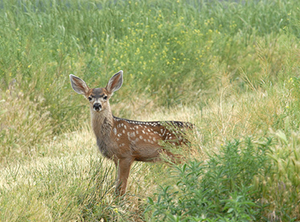FOR IMMEDIATE RELEASE
Media Contact:
Tara DiMilia, 908-947-0500, tara.dimilia@TMstrat.com
Bay Area Lyme Foundation Offers Free Tick Testing Nationwide
Free Tick Testing Initiative Is First In The Nation and Aims to Map Tick-borne Diseases Across the U.S. Through Crowd-sourcing
Silicon Valley, CA, February 16, 2016 — Bay Area Lyme Foundation, a leading nonprofit funder of innovative Lyme disease research in the US, today announced that the Foundation is the first to offer free tick testing for residents of the U.S. Testing is available through a partnership with Nate Nieto, PhD, Assistant Professor, Department of Biological Sciences, Northern Arizona University and his lab. Bay Area Lyme Foundation hopes to use this crowd-sourced data as a vehicle for gaining a greater understanding of the geography of tick-borne diseases in the U.S. If successful in accumulating data, it will be the first crowd-sourced study of its kind.
 Blacklegged ticks
Blacklegged ticks